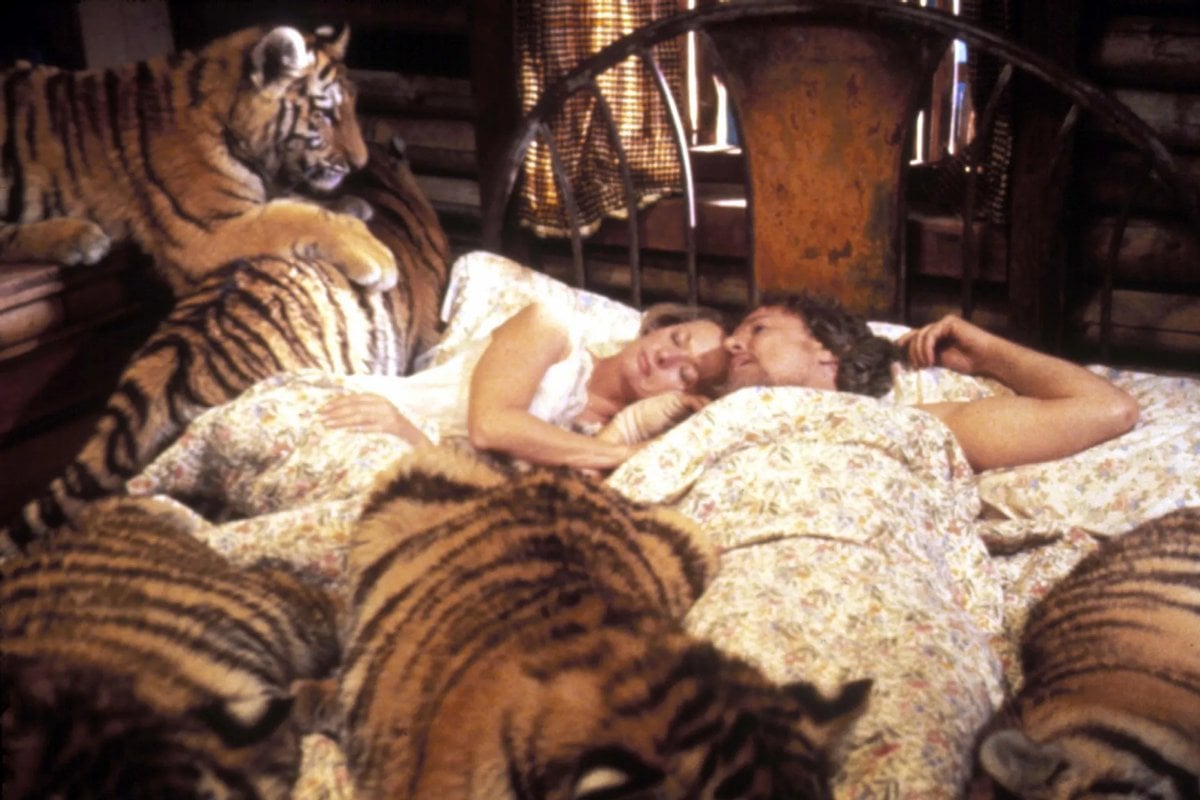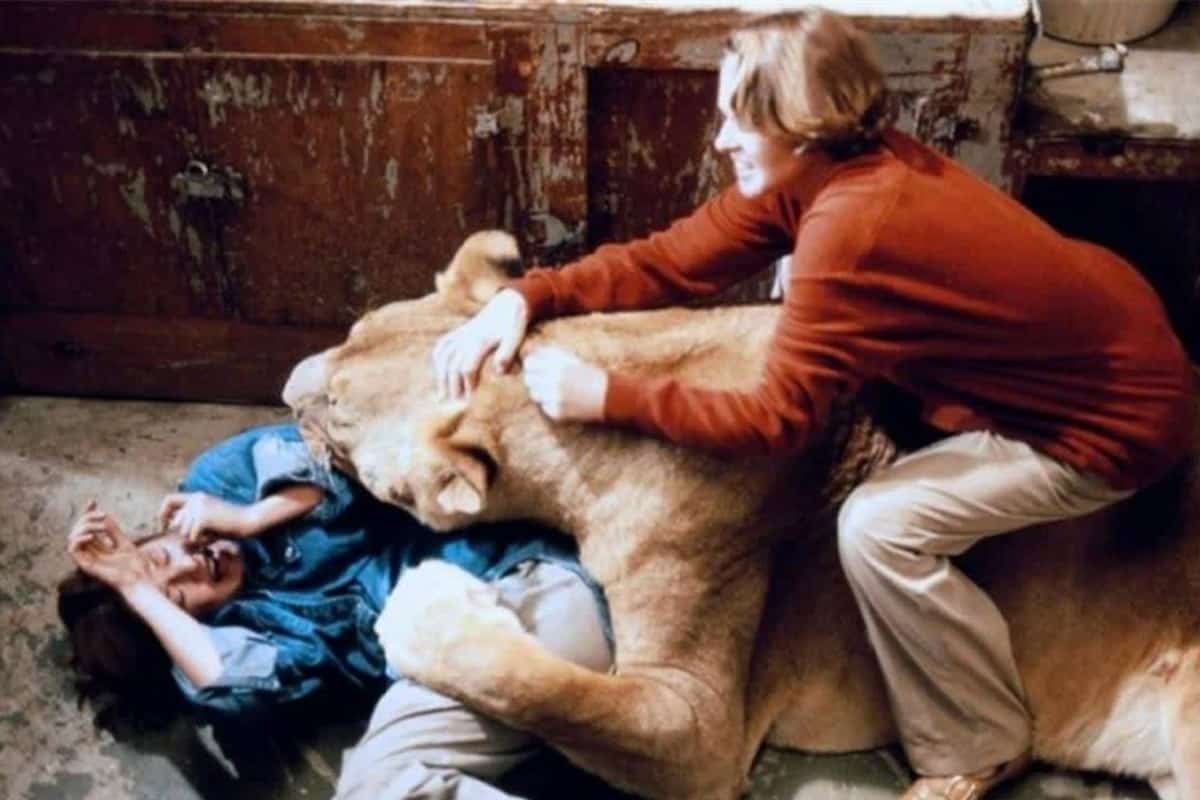
In 1969, while filming Satan's Harvest in Zimbabwe, actor Tippi Hedren and her talent agent husband, Noel Marshall, went on a trip to a game preserve in Mozambique.
After visiting a house inhabited by around 30 lions, the pair - who were conservationists - had an idea: What if they made a movie about a home over-run by big cats?
Thus, the premise for Roar, one of the most dangerous film ever made, was born.
Watch the trailer for Roar. Post continues below.
When they returned home to the United States, Hedren and Marshall set their plan in motion. They worked on the film's storyline together, with Marshall writing up the final script. The story centred around a scientist living with big cats and other wildlife in Tanzania, while his wife and their three children live in Chicago. When the family come to visit him for the first time, the scientist is called away for work, leaving his wife and kids to survive on their own with the animals. To make matters worse, there are poachers circling the compound.
Hedren and Marshall enlisted the acting capabilities of Hedren's daughter Melanie Griffith (who was 17 when filming commenced) and Marshall's sons Jerry and John to play the children in Roar. Hedren would play the wife. No actor was willing to take on the part of the scientist, due to the risks involved with the shoot, so Marshall cast himself. It was his first, and last, acting role.


Top Comments